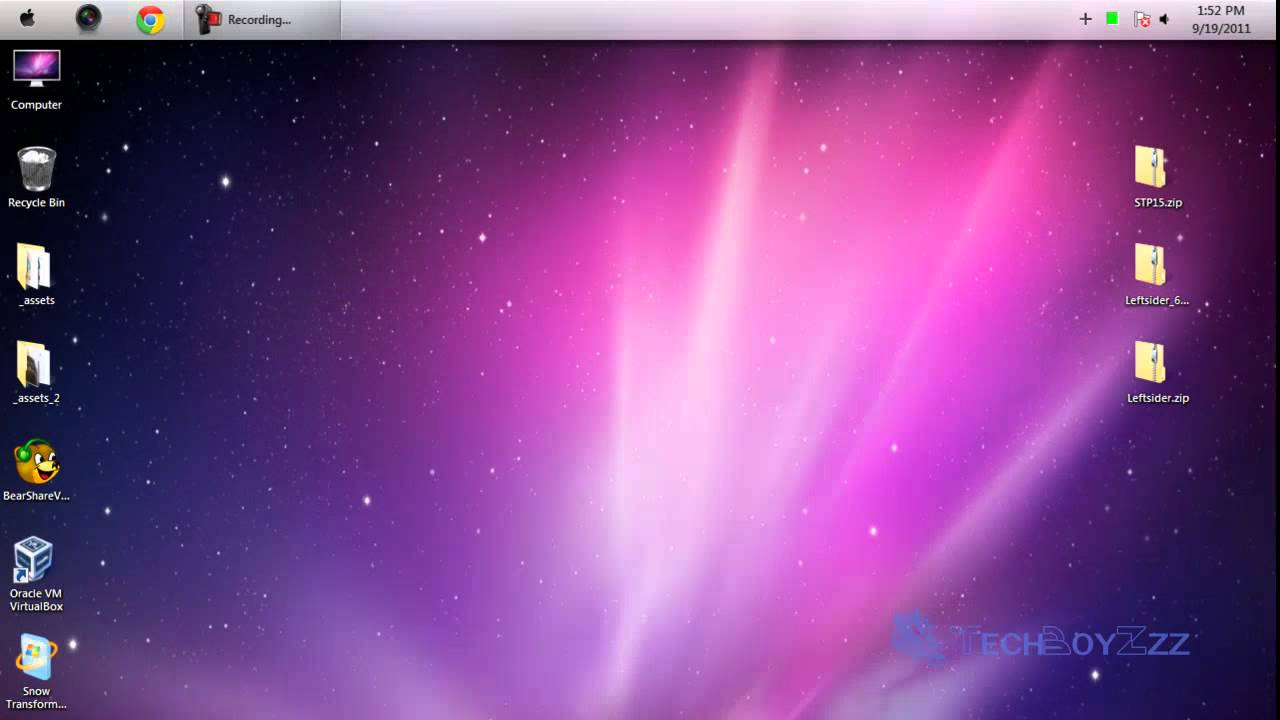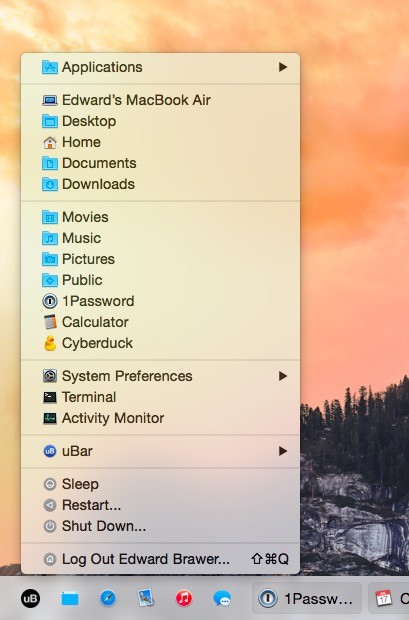

- #MAC OS TASKBAR FOR WINDOWS INSTALL#
- #MAC OS TASKBAR FOR WINDOWS DRIVERS#
- #MAC OS TASKBAR FOR WINDOWS UPGRADE#
- #MAC OS TASKBAR FOR WINDOWS WINDOWS 10#
- #MAC OS TASKBAR FOR WINDOWS PRO#
This option must be selected if you want to use apps in Split View on your other displays.Ĭhoose shortcuts for showing and hiding Mission Control, open windows for the current app and the desktop. Set up separate spaces for each display (if you use Spaces and have multiple displays).

If you have several windows from multiple apps open simultaneously, have the windows organised by app in Mission Control. If you use Spaces, have your desktop scroll to a space with open windows for an app when you switch to that app. When switching to an application, switch to a Space with open windows for the application Get quicker access to the desktops you used most recently (if you created additional desktops using Spaces). Show recently opened apps (if they aren’t already included in the Dock) towards one end of the Dock.Īutomatically rearrange Spaces based on most recent use Show a small dot below an app’s icon in the Dock when the app is open. To show the hidden Dock, move the pointer to the edge of the screen where the Dock is located. If the option isn’t turned on, the window is minimised to an area in the Dock. Minimise an app window to the app icon in the Dock. If the Dock is along the side of the screen, the window fills the space below the menu bar and to the side of the Dock.ĭo Nothing: Don’t do anything when the title bar is clicked. Zoom: Expand a window to fill the space between the Dock and the menu bar. Minimise: Minimise an app window to the Dock. Locate the Dock along the left, bottom or right edge of the screen.Ĭhoose the visual effect used when you minimise a window.Ĭhoose what happens when you double-click the title bar of an app window: Drag the slider to choose the magnification size. Magnify icons when you move the pointer over them.

#MAC OS TASKBAR FOR WINDOWS INSTALL#
#MAC OS TASKBAR FOR WINDOWS UPGRADE#
Windows gives you a lot more leeway in configuring a system with the components you want, and more flexibility to upgrade later. Theres also a wider array of Windows-friendly peripherals to choose from.Īs for internal componentsthings like the CPU, graphics card, and storagetheres no contest. To those, you can add nontraditional options like the HoloLens, VR headsets, and the Raspberry Pi, which can all also run Windows 10. The issue is that selection is not only pricey, but its also dwarfed by the availability of an enormously diverse array of Windows PCs. You can also use Launchpad icon to page through and start apps. Theres nothing similar in macOS, but you can pin frequently used apps to your Dock, head to the Applications folder, or set up your desktop with icons for your most-used programs and files. Once youve booted the OS, Windows has the Start button and menu to access your most-used apps, settings, and documents. If you dont have hardware thats compatible with either of those features, Windows will also accept a PIN. Windows Hello also supports fingerprint readers, available on laptops such as the HP Spectre 13.
#MAC OS TASKBAR FOR WINDOWS WINDOWS 10#
Taskbar Windows 10 Offers Helloīut Windows 10 offers Hello with several biometric login options.įace login is probably the coolest, and is available on most higher-end PCs, including all Surface devices. Or you can log in with your iPhone or Apple Watch if they are close enough to the computer.
#MAC OS TASKBAR FOR WINDOWS PRO#
If you have a MacBook Pro with a Touch Bar, you can easily sign into your Mac using your finger.
#MAC OS TASKBAR FOR WINDOWS DRIVERS#
Taskbar Drivers For Standardīoth automatically recognize and install drivers for standard hardware peripherals such as mice, keyboards, and storage. Microsoft lets you install the OS with your voice using Cortana.Īpple installs updates through the System Preferences instead of in the Mac App Store. Youll miss out on syncing machines, voice assistants, app roaming, messages, and a whole lot of other goodies by not signing in. You can use both without signing in to an account with Apple or Microsoft, but both offer a richer experience if you do. It involves what the people around you use, your ecosystem (including your smartphone and tablet ), your business needs, and your personality.


 0 kommentar(er)
0 kommentar(er)
